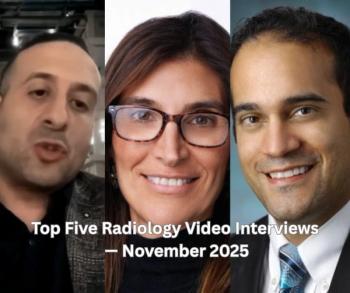
How to Create a Strategic Marketing Plan to Drive Growth
Radiology groups can boost referral value and market share by having a comprehensive marketing plan. Here’s how.
MINNEAPOLIS - As the landscape of medical imaging changes and the future looks uncertain, there is at least one piece of the puzzle that radiology facilities can and should control: strategic marketing.
“You can absolutely impact your referral value, and you can increase your market share by having a strategic marketing plan,” said Nicole Faucher, vice president of sales and marketing at MedQuest Associates, speaking this week at the
It doesn’t matter whether the organization is a hospital or an imaging center, and it doesn’t matter whether it employs physician liaisons, sales representatives, or none at all, said Allison Arant, the area marketing manager at MedQuest. A thorough marketing strategy is about how organizations develop a plan, how they decide to leverage whatever resources they have, and how they measure their outcomes.
But it’s not always clear to a radiology facility, she said, what its strategic plan should be.
“We do what we do every day in the department. We understand so well how that works,” Arant said. “But we may not always understand so well what happens outside our walls, and what really impacts what comes inside our facilities.”
Arant recalled a hospital she once worked with that had built a state-of-the-art outpatient facility. And then no one showed up.
“They were doing maybe one MRI a day,” she said. “We started talking about the bigger picture. You have this beautiful facility, you have these billboards, but what else can you leverage?”
One step to creating a successful strategic marketing plan, Arant said, is to identify and target areas of potential volume growth. That could mean focusing on maintenance if business is already strong, or pinpointing where referrals should be coming from if they’re lacking in a certain specialty.
It’s also important to establish core messages based on provider needs and departmental goals. Of course, that starts with identifying those goals.
“Communication has to happen two ways,” Arant said. “It’s not just us going out into the market, telling people how great our facility is, but it’s also bringing information from the market back into our walls to talk about what we can do differently or better. Maybe you learn that the referral pad is microscopic and they can’t see it, and that’s fine on our end because we know where the checkboxes are, but they can’t see it at all. Or we may realize that they’ve been waiting on hold for 22 minutes when they call our centralized scheduling line, and what can we do about that?”
The point, Faucher said, is to make the process as easy as possible for the referring physicians and then to help educate them on the process. Maybe, she said, physicians are requesting scans with and without contrast, when all they really need is without.
These are often just simple tweaks, and they could go a long way.
“Your impact is huge,” Faucher said, “And you have a lot of leverage in what you’re doing.”
Newsletter
Stay at the forefront of radiology with the Diagnostic Imaging newsletter, delivering the latest news, clinical insights, and imaging advancements for today’s radiologists.




























